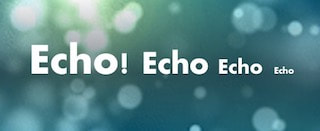|
Repeated Reading, pioneered by Dr. Jay Samuels, is a specific and thus capitalized routine for building fluency. But when it comes to uncapitalized types of repeated reading, there are many engaging ways to go. This post looks specifically at choral and echo reading. Both provide support for reluctant or struggling readers, allow the teacher to monitor word pronunciations and note errors, and provide valuable feedback, important because feedback helps readers form the exact pronunciation and spelling of every word. With repeated reading, words can be more fully processed by the brain’s reading circuitry and thus there is a better chance that each word will be stored completely (with all aspects of meaning, sound, and spelling) in the “brain dictionary.” Choral and Echo Reading During choral reading, students read a short piece of text in unison with the teacher. After the teacher first models fluent reading, students read along and try to match the pace and prosody. The text can range from lines of decodable text or sentences from a leveled reader to a paragraph from an article, a story excerpt, or a book. Another option is a piece of poetry. Depending on the poem and the students, either the entire poem or a specific stanza is repeatedly read. Echo reading is when the teacher models and then the student or students read the same text back. Kindergarten kids typically echo one sentence. To determine the number of sentences for other grades, consider the demands of the text and the abilities of the students. If students need support and the sentences are relatively difficult (longer and/or with higher decoding demands), one sentence will do. But if sentences are shorter and easier to decode, pick two or three for echoing. Otherwise, students with good short term memory will simply “parrot back” a sentence without ever reading it.
Groupings for Choral and Echo Reading Echo and choral reading can be used with groups of all sizes, from small to whole. When working with students who need a lot of support, use both types of repeated reading every day. Here’s one possibility for what a repeated reading routine might look like:
A Classroom Example As an example of repeated reading, let's imagine a small reading group of five 3rd grade students who have just finished whisper reading the text at the bottom of this post. Your teacher talk might sound like this:
Upcoming In my final blog on repeated reading (coming up in two weeks), we’ll dive into why and how to use poetry for repeated reading. Comments are closed.
|
Mark WeaklandI am a teacher, literacy consultant, author, musician, nature lover, and life long learner.
|

 RSS Feed
RSS Feed